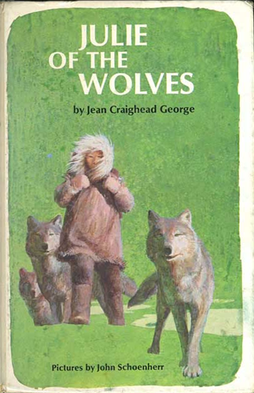Julie of the Wolves is a wonderful story about an Eskimo girl facing the encroachment of the modern world on the Eskimo traditions and the natural world of the Arctic she lives in. Julie loses her mother at a very young age and her aunt takes her away from her father through legal means. Julie is then forced into marriage at thirteen, as is sometimes the custom among the Eskimos. This type of marriage is not binding, however, and Julie escapes into the wilderness in an attempt to find a life where she can start over again. Along the way to her destination, she uses knowledge of the old Eskimo ways to survive the harsh conditions that she experiences. This book is full of the wonder of living as part of nature. It also explores the Eskimo culture and the clash that happens when the modern world meets the old ways.
I would plan to use this book as an adjunct to lessons on the Arctic, Eskimos, the life cycles of lemmings, wolves, ecosystems, and/or ecology. There are bits that may be too much for younger students: the marriage between the thirteen year olds ends in a vaguely described assault. The main character befriends a wolf pack and the wolf pack adopts her and helps her to survive. Later, after we learn to love the wolves individually, the leader is shot cold by humans that happen to be out hunting. There are also vague references to Julie "not being a woman yet." The benefits of this book would be great in the classroom. It is a well told story, with a well developed plot and characters that are believable, even when they're wolves. It was found in the children's section of the library. It was awarded the Newbery in 1973. I would use it in a fourth through ninth grade classroom.
